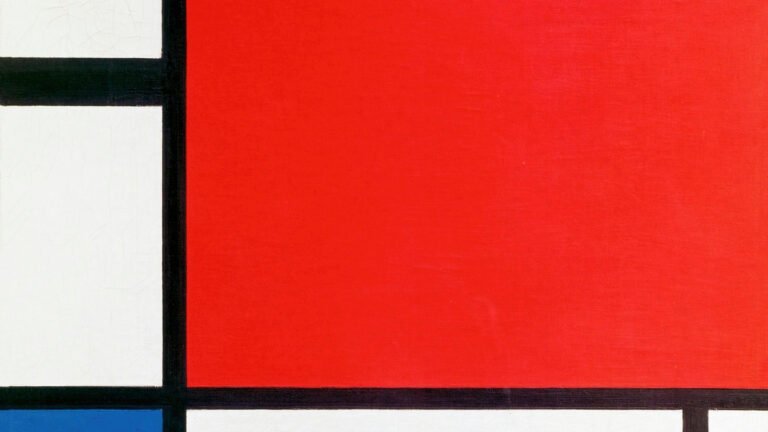
Mondrian’s “Red, Blue, and Yellow” stands as an iconic masterpiece that epitomizes the artist’s unique style and profound impact on the world of modern art. This article delves into the significance of the painting, its historical context, and the enduring appeal that has made it an everlasting symbol of geometric abstraction.
Piet Mondrian, a Dutch painter, played a pivotal role in the development of abstract art, particularly with his innovative style known as Neoplasticism. He sought to express the universal harmony of nature and the spiritual essence of reality through the use of simplified geometric shapes and primary colors.
Mondrian’s artistic journey can be traced through the phases of his career, with “Red, Blue, and Yellow” representing the pinnacle of his exploration into the relationship between color, form, and space. This painting, created in 1930, exemplifies Mondrian’s shift towards pure abstraction and the pursuit of a universal visual language.
“Red, Blue, and Yellow” features a white background divided by thick, black horizontal and vertical lines, creating a grid-like structure. Within the grid, Mondrian placed blocks of primary colors: red, blue, and yellow. These colors, complemented by white and black, create a sense of balance, harmony, and rhythm.
The choice of primary colors in “Red, Blue, and Yellow” holds profound symbolic meaning. Mondrian believed that these colors represented the essence of life and universal truths. Red signifies dynamic energy, blue embodies spirituality and infinity, while yellow represents the divine and joyful nature of existence.
Mondrian’s meticulous placement of lines and blocks of color in “Red, Blue, and Yellow” creates a sense of equilibrium and harmony. The geometric precision, with right angles and balanced proportions, instills a feeling of order and stability, reflecting Mondrian’s vision of a utopian society.
Mondrian’s groundbreaking approach to art has left an indelible mark on subsequent generations of artists. The bold simplicity and geometric precision seen in “Red, Blue, and Yellow” continue to inspire contemporary art, design, and architecture. From fashion to interior design, the influence of Mondrian’s work can be found in various creative disciplines.
Mondrian’s “Red, Blue, and Yellow” remains an enduring symbol of geometric abstraction, showcasing the artist’s commitment to expressing universal truths through simplified forms and primary colors. Its timeless appeal lies in its ability to evoke a sense of harmony, balance, and spirituality. As we continue to appreciate and study this masterpiece, we recognize its significant contributions to the evolution of modern art and the continued inspiration it provides to artists worldwide.


